Feature 27 min read
The future of charging?
Engenie's rapid charging points are simple to use, require no membership or connection fee and operate with all contactless payment cards. We talk to CEO Ian Johnston and Strategy and Marketing Manager Dora Coventry, as well as Richard Frost, Technical Manager of SWARCO eVolt, Engenie’s strategic partner for hardware supply, operations and management and back office support.
Can you tell us when and why Engenie was founded?
Ian: Engenie was founded back in 2013 by Jeremy Littman, who’s a major shareholder today. Jeremy’s concept was a public network of rapid chargers based on his belief that people would go to places where their dwell time would match the time it took to charge their vehicle. He wanted something that would be easy for the customer and he was very focused on rapid. He recognised very early on that 50kW chargers would become the standard rate, but he knew it was difficult to take payment, and these chargers were clunky and huge and he wanted to change that. His vision was good customer offering in terms of experience and technology. While there’s been a huge amount of activity in the last 18 or so months, the concept has been alive for nearly six years now.
So, when and where were the first chargers installed?
Ian: Between 2015 and 2017 four pilot Engenie sites were installed alongside local councils to prove the concept that there was a requirement and also the company’s ability to deliver, operate and manage these sites. Three sites, each with two 50kW chargers were installed in the Cheshire East area including Wilmslow, Nantwich and Congleton and a seventh charger was added in Fleet, Hampshire. They were a great test bed in terms of looking at how we tackled tariffs, customer care, branding and site layout. It was off the back of those pilots that allowed Jeremy to go out and seek funding to help grow the team and the business.
In quarter three of 2017 the business secured 1.5 million of crowd funding which was used to take on initial staff and build the business. Within a few months of that crowd funding being announced the marketplace was changing rapidly and Investec, the investment bank, became interested and by February 2018, we closed the second round of fundraising to the sum of 5 million, so things accelerated very quickly.
That was when Dora and I joined the business and we set about building a team to deliver a business plan to install charging points at landlord and local authority sites.
Can you give us an overview of the company today?
Ian: Engenie is an open, public rapid charging network. Now, there are a few points to come back to there. The open element of our business is we’re not a membership model; our belief is that any EV driver should be able to use our chargers with contactless payment, and we intend to be a national network across the UK from the tip of Scotland to Cornwall. They don’t need to register with us or have RFID cards or an app.
Our approach to the market is to offer a fully funded solution, so we pay for everything and we own everything and we work on a profit share with our landowners. So, today we are building out over 100 rapid charging stations this year – people say to us – what do you mean by rapid? Our belief today is that the sweet spot that hits the customers’ needs and the vehicles on the ground is 50 kW. We acknowledge that battery sizes will grow and we think charging rates will grow and while over time we may see 100 or 120kW chargers being installed, ultra-charging is not the right solution for the vehicle on the road today or for the locations where people are charging their cars.
Dora: I think what we’re seeing is the way people refuel is fundamentally changing, so rather than go to a petrol station to charge or refuel, they go to a place where they would already spend time so whether that’s doing a weekly shop or at a Marston’s pub while they have lunch with their family or business meetings, and that dwell time matches how long it takes to fully charge or just top up their car. And that’s where Jeremy was so forward-thinking. Most people will be able to charge at home, so the questions we have to ask ourselves is when will they need a public rapid, how will they want to use it. They don’t want to sit on a forecourt for 20-30 minutes, which is the average time we see people spend at our chargers, so it’s trying to think of really good locations where our customers will want to spend time.
So, is this how you work with land owners?
Ian: Yes, Marstons are a great example of this and a number of other high profile builds will be announced over the next few months. We offer a fully-funded partnership whereby Engenie fund the equipment and operate everything, which is important to landlords for two reasons. Firstly, the installations when you get to the rapid scale of the market are expensive – between £75k and 100k for two chargers, and the payback on such an install may be as much as ten years. When you talk to most businesses, many would look for payback on most investments in four years, and any investment in the EV infrastructure is slightly risky itself as you’re guessing the tipping point of mass market EV adoption. So, Engenie and our investors take a long term view on this which a lot of corporate businesses can’t make. That is why landlords are attracted to our fully-funded offering.
Whilst many businesses like the benefits that come with the customers’ dwell time, they don’t want to manage an EV charging station or the tech behind the network – they want to focus on their core business, so they also like the fact that this is Engenie’s responsibility, while the operation and maintenance side of the chargers is handled by our partners eVolt and SWARCO. We will also do grid studies and see if it is commercially viable to install chargers on a landlord’s estate, and oversee planning requirements.
Why would companies choose to engage in Engenie?
Ian: It is very dependable on the type of business. There are three main reasons. First those businesses that are really looking to strengthen their corporate responsibility credentials and boost their green credentials. Secondly there’s no doubt that many businesses of the future, especially those in retail, are keen to increase footfall, and a site with a rapid charging station can become the go to point for an EV owner. There’s also an advantage to that in terms of having the edge over their competition, as it may not be possible to install more than two charges per site due to demand on the local grid network as it is limited in terms of the capacity it can offer to a site. Two rapid chargers require the same electrical load as a Marston’s pub for example, so it may be only two thirds of applications made the grid are successful. Thirdly, is cash, and in the future charging installations will offer a good additional revenue stream for retail businesses in a market place which is becoming increasingly more challenging for them.
And why would an EV motorist chose to charge with Engenie?
Ian: We want to make it easy for the customer, it is part of our DNA and as a team we go out all the time and test the competition and it’s so difficult to charge a vehicle sometimes. It has to be simple to the customer. Jeremy was insistent that every site should have two chargers so there wasn’t a queue, and also that it was accessible for all cars – not just offer DC charging where we can make more money, but also offer AC, for the popular Renault ZOE for example, and allow simultaneous charging on AC and DC. We’re trying to make it easier for the EV driver, and also accelerate the transition to electric vehicles.
We also charge per-kWh so the customer only pays for the electricity they use – there’s no connection, transaction or membership fee, which makes it simple and different to other models. Payment-wise at the moment we have normal contactless and that’s a great advantage to the customer and not something we’re looking to change in the near future, but we are thinking ahead to how we reward people who use chargers more often and build loyalty – whether that might in-store offers with our landlords or reward points.
So, how does Engenie make money?
Ian: We make money by selling kilowatt hours - the driver will pay on the basis on the amount of energy they take from the charger. And that’s why we talk about this payback being long-term. We will in time look to make a profit from selling kW hours to the customers who have a requirement for public rapid charge. We intend to have over 200 chargers in the ground by the end of this year and we would have spent well over ten million pounds in doing that, but more fund raising will allow us to install 1850 chargers by 2020 and 2100 by 2025. It’s a huge capital outlay which only increases the risk, aside from the uncertainly of knowing EVs come to the mass market but everyone is convinced this is going to happen. It will happen and we need to make sure we’ve got the chargers in the right place for the public. You look at ZapMap and there’s more and more chargers every day and there will be networks that grow faster than we do, it’s easy to stick chargers where you can get grid – but they need to be places where they will be used. By doing deals with the right landlord partners, we can secure the finances we need to roll out to that scale, and deliver the best charging network for the EV driver.
Talking of which you recently collaborated with M7 Real Estate Limited. Is this is a sector of the industry that you can see becoming increasingly more willing to install chargers on their sites?
Ian: Absolutely, from the data we’ve seen if you exclude some of the taxi sites which are used in city centres, retail parks are the places which see the most EV charge sessions per day. And that makes sense as they offer places to eat, places to shop and places to carry out the daily routine, which comes back to what we think people are doing with their car. People won’t accept having to go out of their way to charge their vehicle – the new form of retail park has all the facilities you want so it’s a prime pace for EV charging to be and many of them are strategically on busy roads where there’s high traffic. It’s a perfect example of what makes a good site for Engenie.
To that end do you think the traditional service station could become redundant eventually?
Ian: It’s interesting. I think service stations, in a traditional sense as we see them today, are under a lot of pressure. If you look at the data there’s been a huge reduction in the number of petrol stations in the last five years – regardless of the new wave of EV charging. They will need to transform in to offering more of an experience to their customers, because drivers will have more of a choice in where they go, so why would stand for 40 minutes in a petrol forecourt? If they do want to do that it will need to offer a nice environment: places to eat, things to do, spacious parking, and easy entry and exit and so on. They need to change or die.
Dora: Given the infrastructure required for a number of EV chargers, substations and feeder pillars, and the fact there these petrol stations are already very complicated – there large flammable tanks of fuel in the ground for instance – it’s a big challenge for them. It will be interesting to see those that are willing to change their sites for the EV driver.
How can you see improvements in tech helping with infrastructure?
Ian: It’s good to see all of the developments that can be made in battery storage and load sharing. I think we’ve seen new impressive advancements in tech – the question for us is how they can help us roll out a network to our customers quicker. A battery doesn’t help you install a charger where there’s no grid, but it can help you provide a higher rate of charge where you’ve already got some grid and the battery can store energy when not in use. At the moment it’s not cost effective for us and it doesn’t help us to deploy more chargers to customers any quicker, but there’s no doubt in the future when we get more into the hub space there’s a role for the advancements that will be made in battery technology. l think where it adds value to public network like ours is in load sharing across chargers, and that’s where we’ll see it first deployed. There a few hub sites planned for later this year and into 2020 and in those cases we’ll looking to see if we can just that.
And will that help alleviate the pressure off grid?
Ian: No, but it will help us deliver a higher rate of charge to customers. But because we can’t locate our chargers next to huge solar farms, like maybe some our European counterparts can, it isn’t as simple as if we were dealing with green field sites, for example.
Dora: It’s a matter of scale, if you’re talking about generating from solar or even battery storage, to fulfil the rapid charging need, which is quite grid intensive – there’s a huge amount of energy needed in a short space of time and at the exact moment the customer needs it. So there’s not a huge amount a scope for vehicle to grid or smart charging in that scenario. I think where we could see that potential for solar or battery storages, as in terms of where we talking more about hubs, will be perhaps down the line where there’s places where we can have more space and build that infrastructure. But at the moment the places where people want to charge, are smaller, it’s a few spaces within a busy destination. Back to your earlier point if you’re thinking about the service station of the future and focusing on rapid charging, that’s where you would have the space for the substation nearby that cleverly combines the generator and charger together.
What equipment and hardware do you use and why?
Ian: We changed to work with SWARCO eVolt in the summer of last year after we did a huge market review of what was the right hardware to use for our customers, but also what was the right back office and customer call centre. So we reviewed the whole market place and went with SWARCO eVolt’s offering as for us, it was a product that was tested and proven on the road and being used by customers on big contracts. We spoke to many of their customers, and the key great examples would be all of their hubs in Dundee, their chargers in Heathrow and the Cambridge Council taxi scheme. We were very impressed by the report that came back not just in terms on reliability of uptake of the chargers but the way SWARCO eVolt responds to issues.
Richard, can you give us some background on the company?
Richard: The eVolt division was founded in 2010, it’s part of the SWARCO group just concentrating on EV charging infrastructure. At the time we formed a licence distribution agreement with a company called Circontrol, who is a global provider of electric vehicle charging equipment, and they’re a great partner to have as they invest heavily in R&D and they’re quick to bring new products to the market. They are part of a larger group that specialise in power electronics, so a lot of the components that are used within the chargers are sourced within the group which gives great benefit in terms of technological advancement. Together over the last 9 years we’ve installed 6000 commercial charge points installed across the UK, 300 of those being rapid chargers. The ethos of eVolt, and one of the main reasons for our good reputation in the marketplace, is our level of service support and dedication to the maintenance of chargers. I think the market place suffered in the earlier years from poor maintenance and poor service support across the UK, and in comparison one of things that has benefitted us is our attention to detail in that area. We put a lot of investment into service support engineers, so we have eight dedicated EV support field engineers around the country but we also have the benefit of the SWARCO group in the UK – giving us a further 50 in-field engineers which are trained to a certain level on our chargers as well. As a result of that over the last three years we’ve seen a lot of clients come to us, such as Engenie, who are really pushing for much faster response times and we’re geared up to achieve that.
The uptime of our chargers is rated at over 99.5 per cent and that’s due to the amount of service support we have and also very good remote diagnostics for the charging equipment, so it’s very rare for an engineer to be called out to a charger if there was an issue without having a good understanding of what it might be and that increases our potential of the engineer attending that site has the right part. We also put a lot dedication into what we call critical spares that are carried in the vehicles of our engineers – which are BMW i3s by the way – and this is reviewed every three months.
As the uptake of EVs grows so will the demand on your machines, how can you ensure they’re still reliable with more use?
Richard: One of the key features of the chargers is the fact we use modular power rectifier architecture. Traditionally rapid chargers are effectively one big unit internally that can rectify 50kW DC of power, but what we have is four 12.5kW power rectifiers which are modular, completely separate. And how that helps us in answering your question about how we cope with future demand is that those modules work on clever algorithms. So if a vehicle is only drawing a small amount of power because the battery is becoming nearer 100 per cent state of charge, it will switch off maybe two of three of the power modules and only drive one or two of them at different times. Or if module one did most of the work that morning, for example, on the second charge of the day when there is high load required it will work on another module. We’re spreading the work load of the power modules around those four packs which is helping us to increase the life time and life cycle of the machine. Another kay factor of those modules is that they are much more efficient. When you’re rectifying AC power into DC there is a sweet spot on the most efficient point so by having these multiple modules we can run them nearer the most efficient point for longer periods of time. It is a big advantage for Engenie who are trying to make money from supplying kW hours because if the efficiency of the charger is higher it will mean more money will go into repaying the investment they have made in the infrastructure.
Lastly, to try and increase the life cycle of the charger is down the maintenance and diagnostics I mentioned earlier. We make sure air filters are cleaned, critical parts are tested, reviewed ad replaced if needed: it’s really a case of monitoring and making sure those chargers aren’t abandoned like they were in our industry in the early days.
Dora: From our perspective the real value in having secured a site is, having secured the grid connection, we can offer the best charger on the market together with SWARCO eVolt and Circontrol - and in terms of new technology and hardware we’ll be ahead of the game and able to upgrade whether it’s the innards of the charger or the whole thing. Whatever the usage or expectation of a charger from the customer, we are ready thanks to these guys to offer a better experience.
How does a driver locate one of your sites?
Dora: They are dynamically available on Zap Map so you can see when they are in use or available and each site has two chargers. Also on WattsUp, which is a pure rapid charging service map-based app.
We’re also working on getting dynamic availability shown on more mainstream maps like Google maps and HERE, which is key to car navigation. So our strategy is to be anywhere people are searching, so as we grow we can be as wide as can be in terms of where people search.
What makes you different to competitors?
Dora: There are lots of things we do that our competitors do but we’re the only network that offer the winning triangle of customer services. Contactless as standard, offering the ability for AC cars to charge as well and installing two chargers as standard. We offer a truly customer focused approach to the charger network.
How do you plan to stop non-EV cars parking in your charging bays?
Dora: We have good signage and clearly marked up tarmac on the parking bays, so like parent-and-child bays this deters most non-EV cars. There is also low pressure on the bays compared to what we expect in the future. Our landlords are talking to us about how to manage it in the future and we will be working with city councils that are having parking penalties put in place – whether you’re an EV or not – if you’re not using the charger then you will get fined. We have to fit into existing parking payment regime and so the other challenge is matching the charger infrastructure to the dedicated parking time of that area. We wouldn’t install a rapid charger in a long-stay car park; we’d do it in a one-four hour stay car park. When the data shows us we need to make those changes that come down more heavily on non-charging cars, we’ll put them in place.
And how do you collate data?
Dora: There are three sources. Firstly, we look at data we have from charging sessions - how long they charge for, how many kilowatts they’re taking and what are the trends around that and where. Secondly, we partnered with Zap Map who has an oversight of the whole industry and it’s very useful to see trends region to region. And thirdly we love to find ways to get feedback from our customers, because one of the pitfalls for us on not being a membership model and being contactless is not having lots of granular customer data. We talk to our customers on social media and we also like giving them something back, such as our two months of free charging offer at Fully Charged Live, which will set up a dialogue with active customers.
Can you tell us about your relationship with Octopus Energy?
Dora: As a charging provider we want to have a renewable energy supply agreement in place and that was recently retendered, with the Octopus Energy partnership the result of that. We’re connected straight to the grid, but for every kWh we sell to the customer we put back one kWh of renewably generated electricity back into the grid via our supply agreement with Octopus.
The relationship is wider than that though – as they have their dedicated EV arm and they’re aligned with us in terms of encouraging people to buy EVs and embrace low emission transport. That’s why we are co-hosting a few events with them such as the local Discovery Days at our new Engenie rapid charge points in Welwyn Garden City, giving over 40 locals the chance to test drive a range of EVs and discover how easy rapid charging can be, but also give EV drivers and Octopus Energy customers within a 15-miles radius of each Marston’s site free charging for three months.
To date what has been Engenie’s biggest achievement?
Ian: Probably our deal with Marston’s, which is enabling us to install 400 charge points in 200 sites and get us closer towards having over 2000 chargers we want. This partnership is a great example of what we think is right for the EV driver – putting in chargers where people dwell for 30 to 60 minutes. That, and building up a delivery team of 16 people who are immensely passionate about a greener transport future and what they do, which ultimately has enabled us to help achieve our business plan and objectives. It’s great to be part of what is becoming a huge global industry in making the world a better place for everyone for generations to come.
Will you be looking beyond the UK?
Ian: What was relevant to us in the early years was that drivers from the European mainland can access our chargers, and they can do that because of our contactless payment; our main objective now is to achieve the roll-out of over 2000 chargers on the ground in the UK and see where that takes us.
What’s been the company’s biggest challenge and what have you have learnt from that?
Ian: Everything in best business practice tells you need to own the customer and own the data and that leads to membership models which is how you understand them and make them engage them with you. But what’s important for our user is when they’re standing at a charge point the experience is simple, quick, effortless and as little interaction as possible, and to truly deliver that you have to leave the customer alone. You have to give them a damn good reason to engage with you. How can we be the best business we can be while also delivering the best and easiest customer service we can provide – that’s our biggest challenge. Most charging networks have to date made it so difficult for the customer – we’re trying to do the opposite.
Dora: It’s about setting up a customer experience that they love, trust and can rely on and then you’re in a position, only then can you start to build up customer data and use it to ultimately give them something back – whether that’s by way of offers or rewards. You have to prove yourself, especially in a market as new as this, before we can ask for that extra information. A marketing guru would probably shoot us down for that, so we have to be a bit creative in order to succeed.
What’s the company’s vision for the future?
Ian: We want to have a nationwide network of chargers which our customers love to use because it is an easy experience and they can charge their vehicles as they go about their daily duties. We think that’s a very achievable ambition and we need to find the right partners to enable that, so that’s our focus and what we look forward to rolling out in the second half of this year.
Any big challenges on the horizon?
Ian: We’ve got a constant challenge in terms of PR, not from our side but the industry. So, people love shiny things and this urgency for 350kW chargers to service the six or seven Porsches in the UK that can take these is unhelpful in terms of customer expectations. What people need now is a 50 to 80kW charger which is contactless and in helpful locations. So I get frustrated when I see stories around ultra-fast charging for the masses – it is right for the motorways of the future but we need to focus on what we’re doing, which is putting the right charging infrastructure in the right places. And it means there’s a lot of education to do and as people are only waking up to the different types of EV charging available. It’s a natural human instinct to go for big powerful things even if it’s not the right thing for the car. We’ll keep educating people and we’ll get there.
Why do you think EVs are becoming increasingly popular?
Ian: It’s interesting – you’ve just got to look at the news every day now – there’s been a huge shift in the public consciousness around the issues of climate change and air pollution. We identified with this last year and saw air pollution in particular has almost become like the plastic issue two years ago, which David Attenborough urged action on. If anything the scandal of Volkswagen has accelerated our transition towards EVs because when you get the biggest car company in the world needing to change or die, it’s only doubling up the efforts Tesla is making. So there’s a huge change in the public consciousness, people are very aware that the purchase decision they make needs to be good for their personal enjoyment, but for the environment and future generations. I think the best stat is in October last year there was a survey that said one in five people were considering purchasing an EV. In February that number was three in five – that shift in four months is staggering. There’s a wave of public decision making that is going to move quicker than the government and car manufactures can deal with – it will be interesting to see where we are at Christmas.
Dora: The products are better, too. There is motivation whether its air pollution or de-carbonisation – there’s obviously the ULEV zone and all the movements that councils and local authorities are doing, but all that would be difficult to implement if EVs were rubbish; and they’re not. They’re cheaper to run, they’re quieter, and they offer a better driving experience. Even if you have no care about air pollution or the future it’s just better, and a better product will always win out in the end.
With any change people find it difficult, especially if being pushed towards it because of regulations, but the more we can educate and show them the advantages the more they’ll change. We’ve seen such a shift in just the last year in how seriously people are taking the environmental benefits of EVs and the superior product element of EVs so hopefully as consensus gathers more and more people will make the transition.

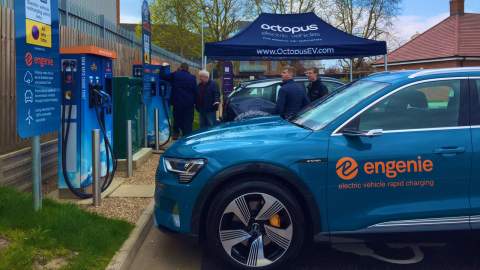
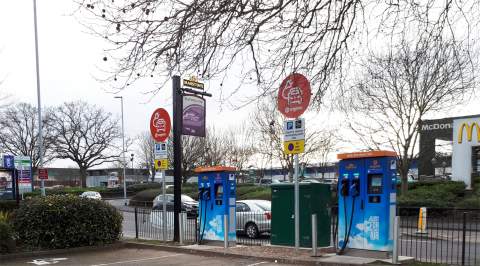
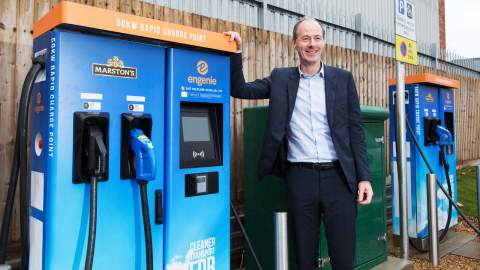
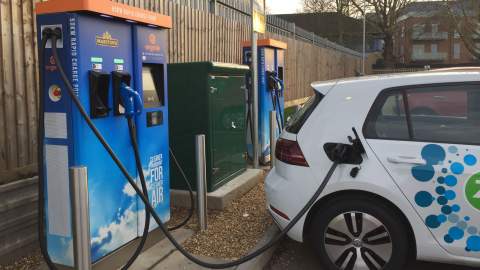
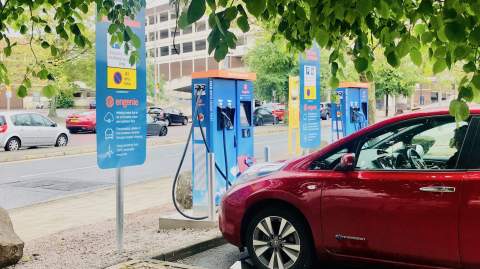
_480px.jpg)
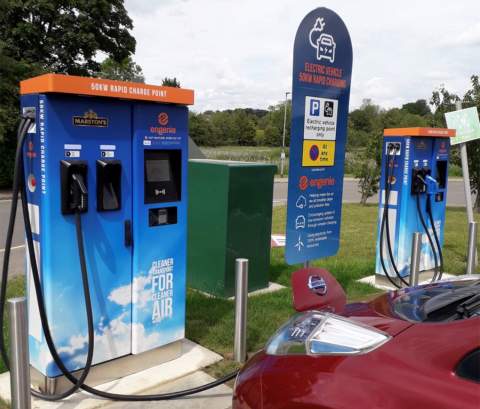
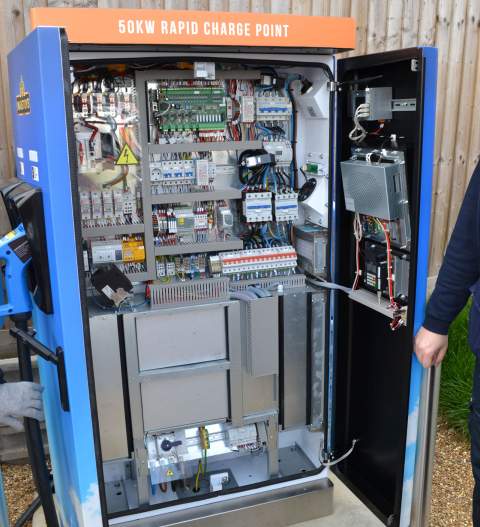
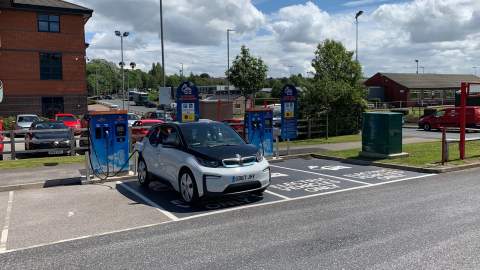
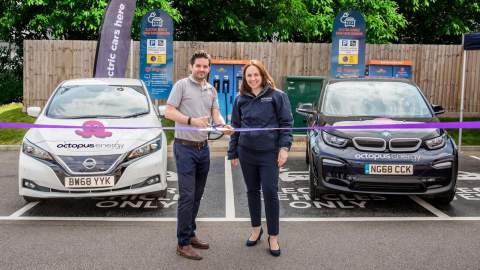
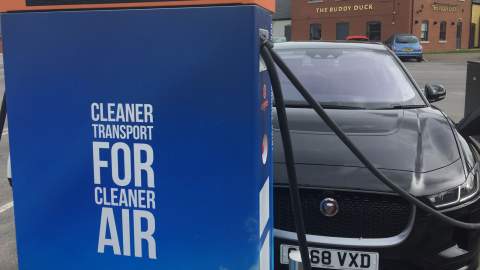
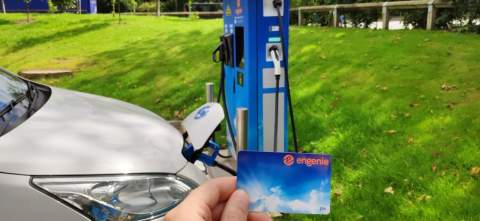
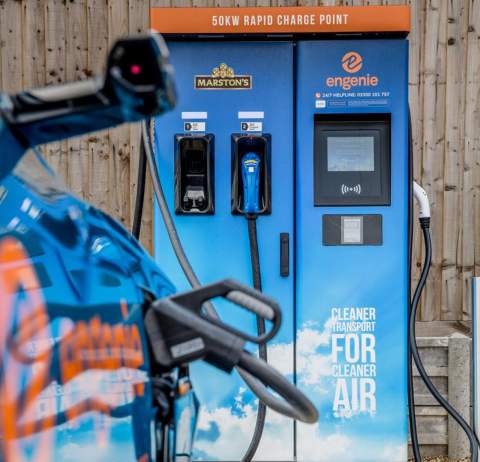

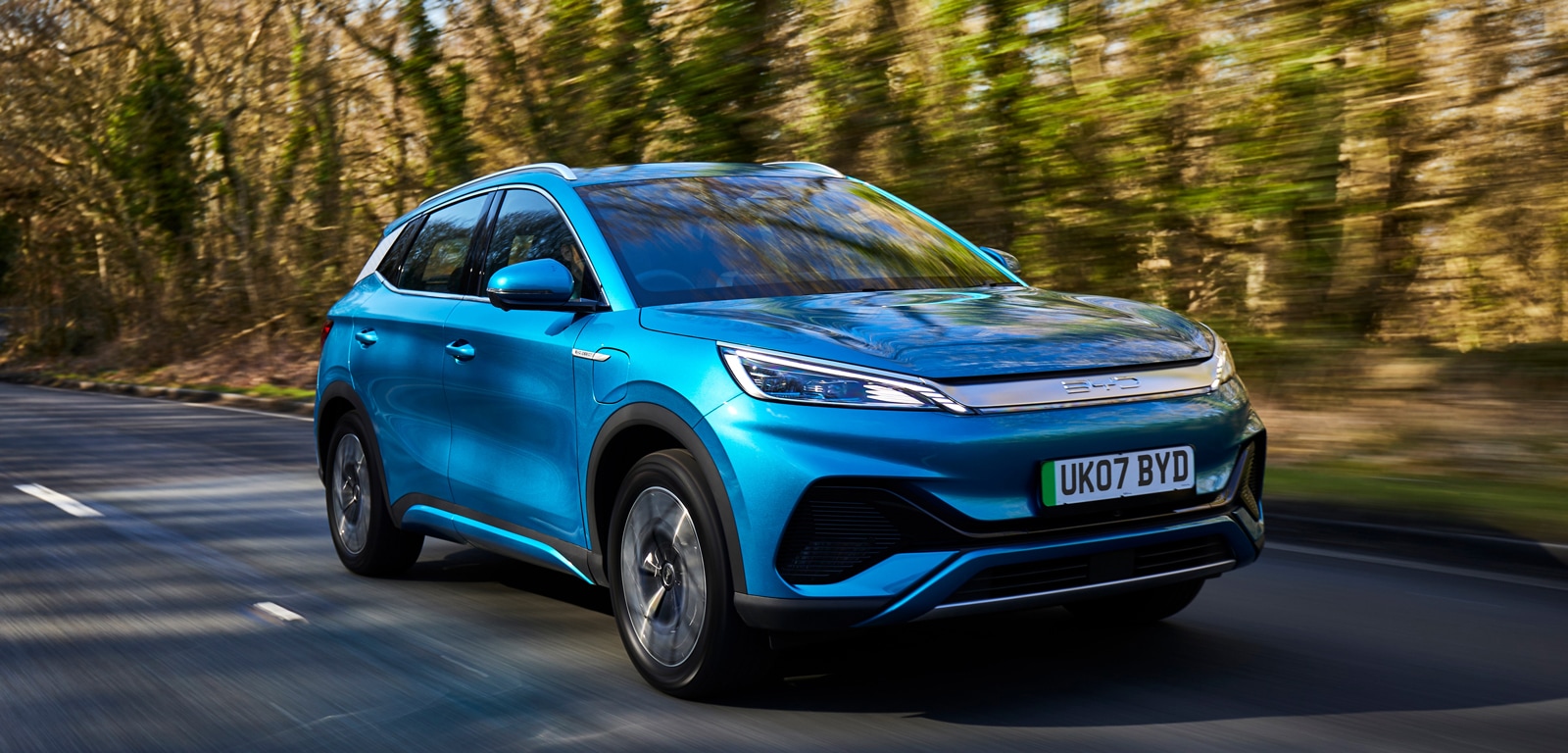
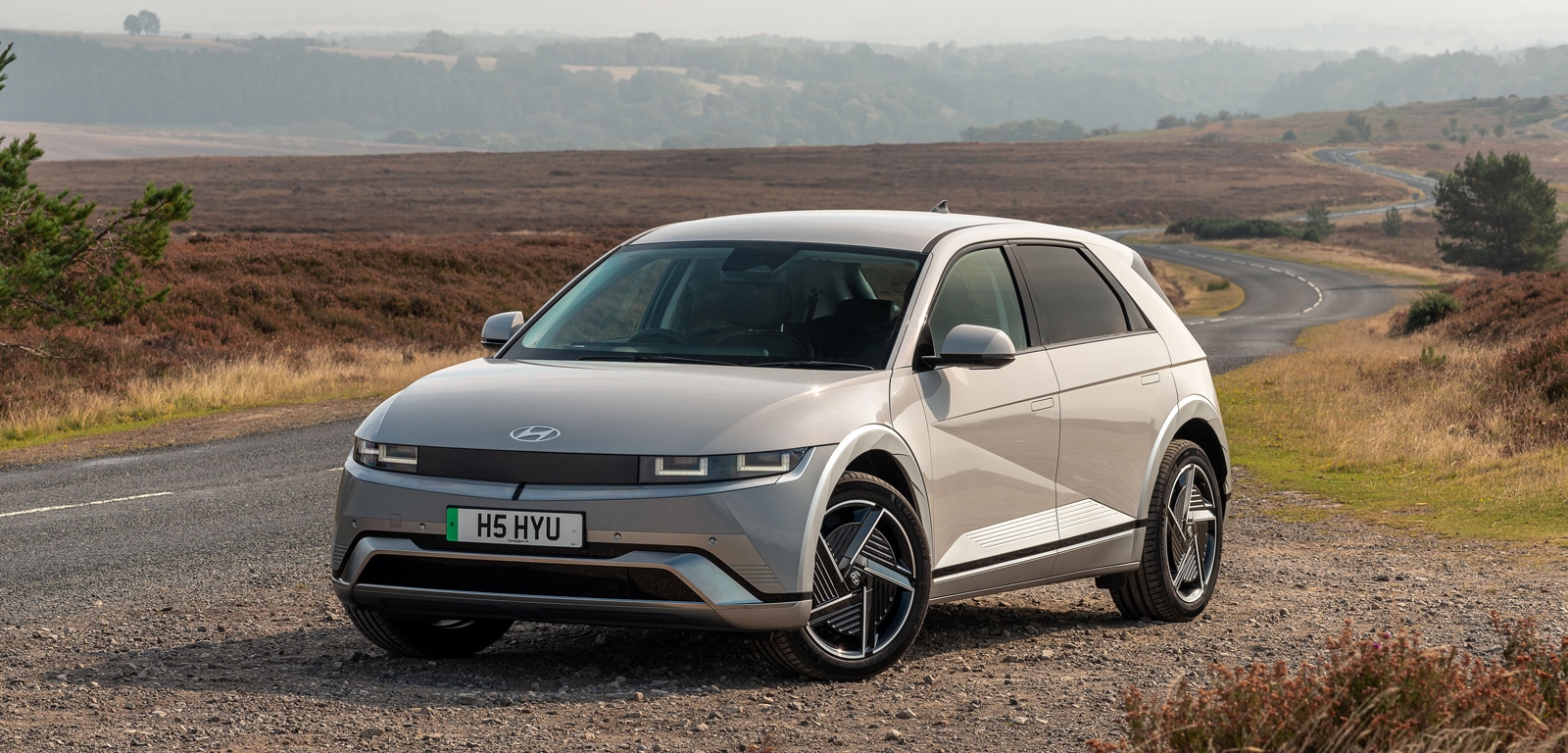
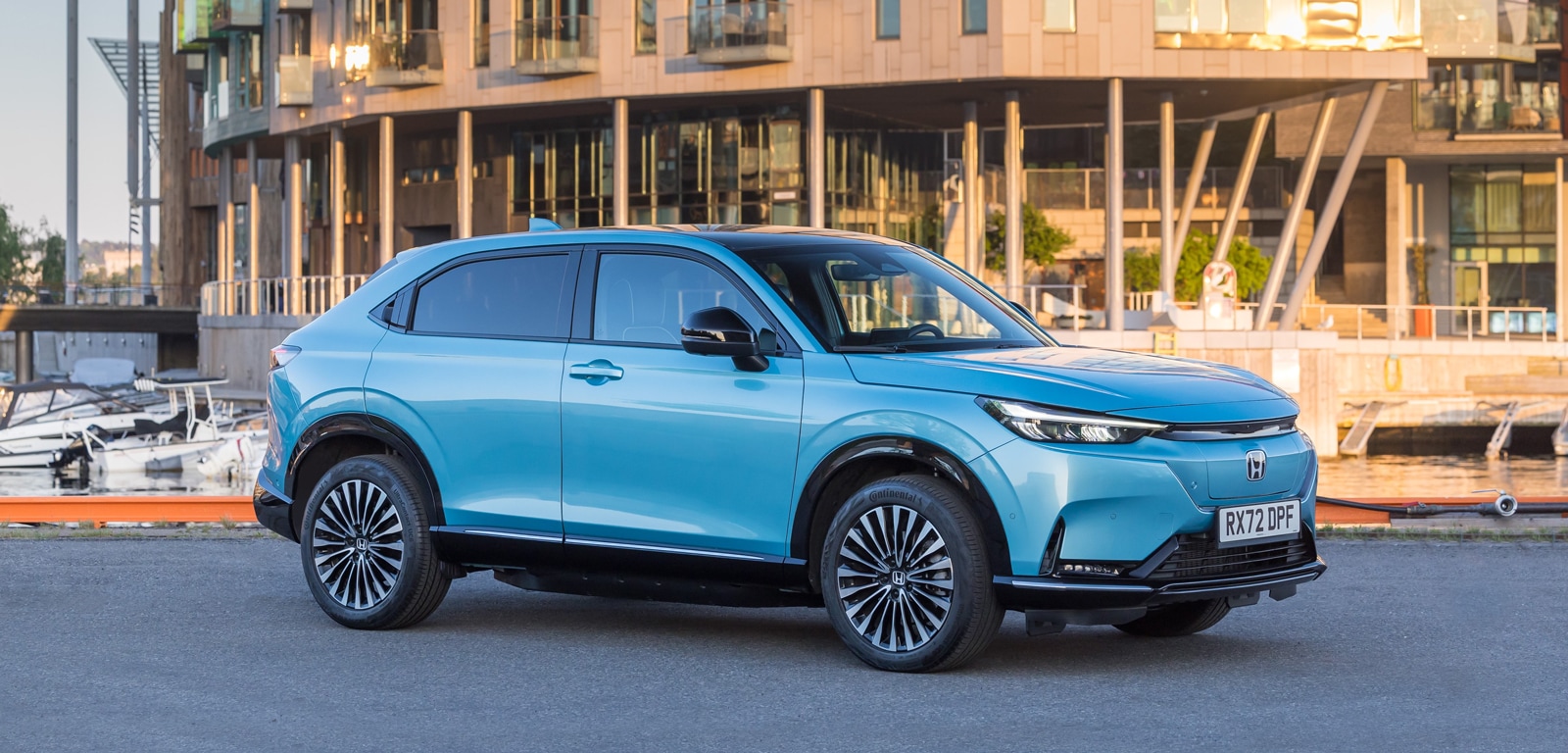
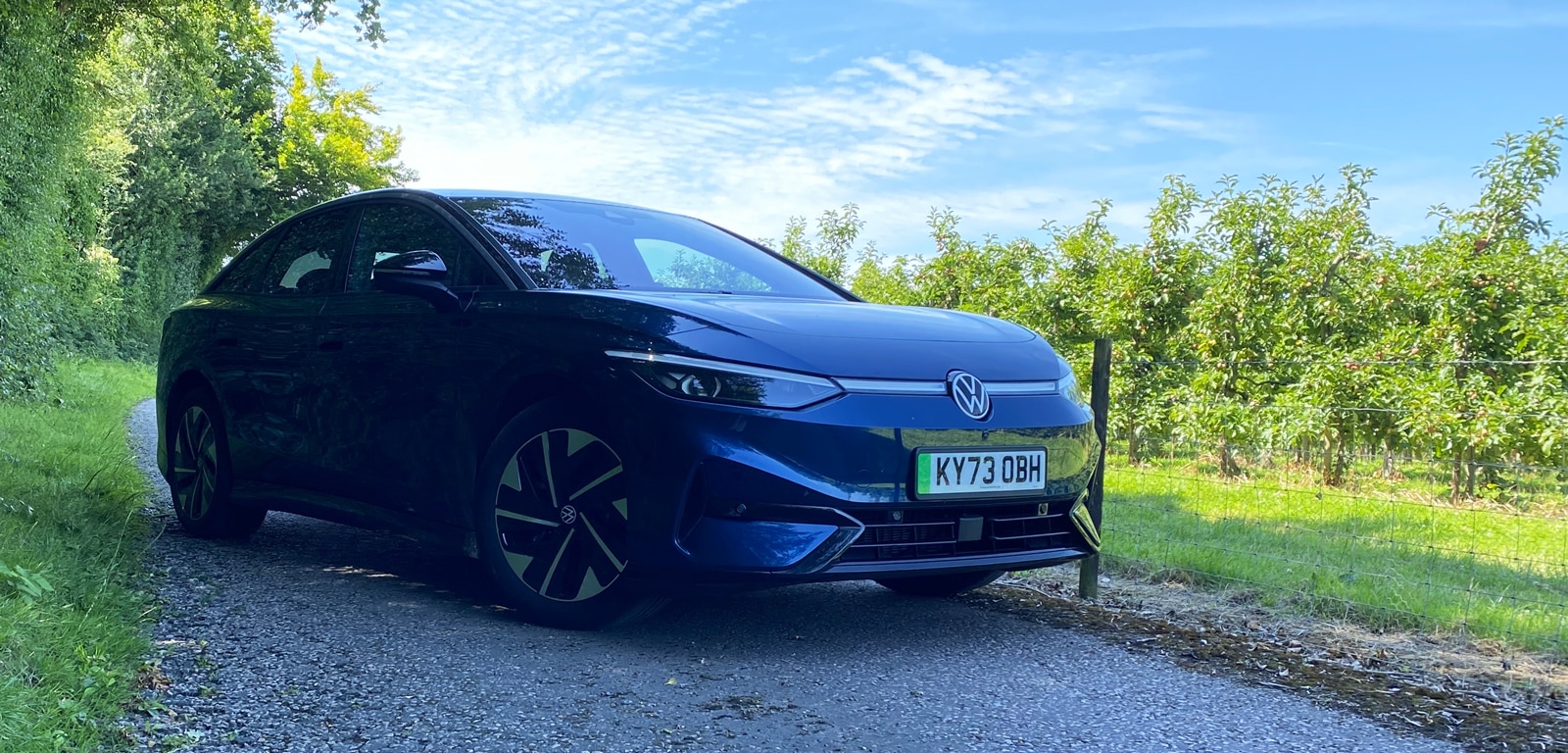
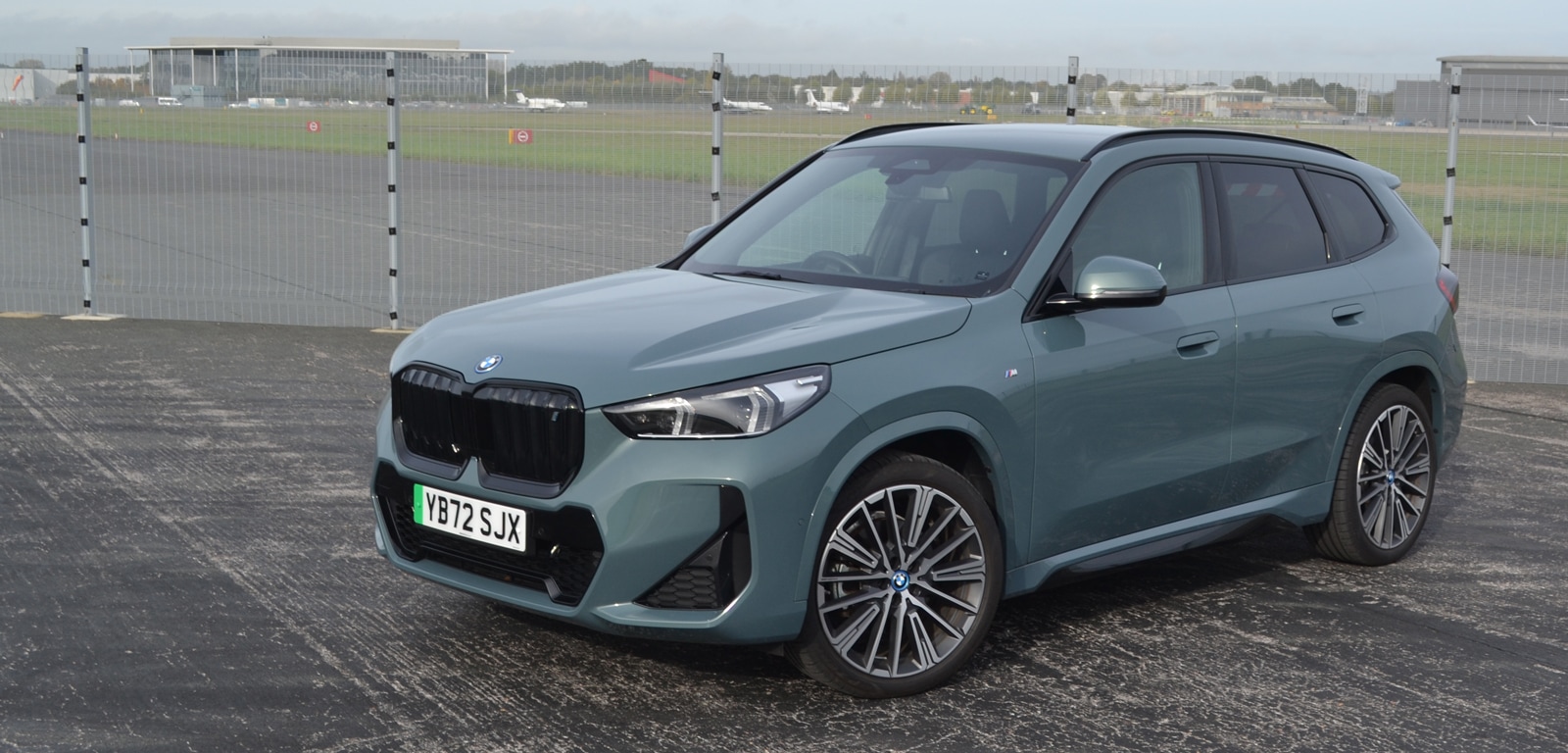


Comments (0)
Be the first to write a comment
Login/ Signup